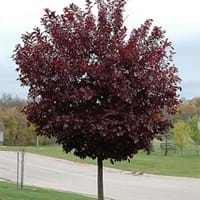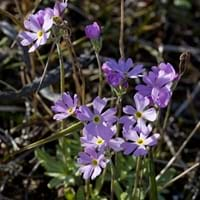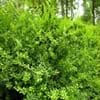Life Span
Perennial
Perennial
Origin
North America, United States, Northeastern United States, Mid-Atlantic United States, Southeastern United States, North-Central United States, South-Central United States, Texas
Northeastern United States, Mid-Atlantic United States, Southeastern United States, North-Central United States, Central United States, South-Central United States
Types
not available
Not Available
Habitat
Boggy areas, Fens, Fields, meadows, Swamps, Woodlands
Roadsides, sand dunes, Waste areas
USDA Hardiness Zone
4-9
5-8
Sunset Zone
1a, 1b, 2a, 2b, 3a, 3b, 4, 5, 6, 7
1a, 1b, 2a, 2b, 3a, 3b, 4, 5, 6, 7, 8, 9, 10, 11, 12, 13, 14, 15, 16, 17, 18, 19, 20, 21, 22, 23, 24
Habit
Thicket/Colonizing
Clump-Forming
Flower Color
Not Available
White, Ivory
Flower Color Modifier
Not Available
Bicolor
Leaf Color in Spring
Not Available
Green
Leaf Color in Summer
Not Available
Green
Leaf Color in Fall
Not Available
Green
Leaf Color in Winter
Not Available
Light Green
Leaf Shape
Oblovate
Oblong
Plant Season
Spring, Fall, Winter
Summer
Sunlight
Full Sun, Partial Sun
Full Sun, Partial Sun
Growth Rate
Medium
Medium
Type of Soil
Clay, Loam
Loam, Sand
The pH of Soil
Acidic, Neutral, Alkaline
Acidic, Neutral, Alkaline
Soil Drainage
Average
Well drained
Bloom Time
Late Spring
Early Summer, Summer, Late Summer
Tolerances
Not Available
Variety of soil types
Where to Plant?
Ground, Pot
Container, Ground, Pot
How to Plant?
Divison, Seedlings
Divison, Seedlings, Stem Planting
Plant Maintenance
Medium
Low
Watering Requirements
Keep the ground moist but not water-logged
Average Water Needs, Do Not over Water, Never Over-water, Requires regular watering, Water more in summer
In Summer
Lots of watering
Lots of watering
In Spring
Moderate
Moderate
In Winter
Average Water
Average Water
Soil pH
Acidic, Neutral, Alkaline
Acidic, Neutral, Alkaline
Soil Type
Clay, Loam
Loam, Sand
Soil Drainage Capacity
Average
Well drained
Sun Exposure
Full Sun, Partial Sun
Full Sun, Partial Sun
Pruning
Prune after flowering, Prune in early spring, Remove damaged leaves, Remove dead branches, Remove dead leaves
Remove damaged leaves, Remove dead branches, Remove dead leaves, Remove dead or diseased plant parts
Fertilizers
All-Purpose Liquid Fertilizer, Compost, Fertilize every year, Mulch, Nitrogen
All-Purpose Liquid Fertilizer, fertilize in growing season
Pests and Diseases
Aphids, Apple Maggot, Fall Webworm, Red blotch, Scale
Slugs, Snails
Plant Tolerance
Not Available
Variety of soil types
Flower Petal Number
Not Available
Single
Foliage Texture
Not Available
Fine
Foliage Sheen
Not Available
Matte
Allergy
Not Available
Abdominal pain, Constipation, Diarrhea, Skin irritation
Aesthetic Uses
Showy Purposes
Beautification, Borders, Landscape Designing, Showy Purposes
Beauty Benefits
Not Available
Good for skin, Making cosmetics, Stops hair loss
Environmental Uses
Air purification
Air purification, Food for insects, Versatility
Medicinal Uses
Not Available
Eczema
Part of Plant Used
Fruits
Root
Other Uses
Used As Food, Used as Ornamental plant
Decoration Purposes, Medicinal oil, Showy Purposes, Used as Ornamental plant, Used for its medicinal properties
Used As Indoor Plant
No
Yes
Used As Outdoor Plant
Yes
Yes
Garden Design
Cutflower, Mixed Border, Screening, Wind Break
Edging, Feature Plant, Groundcover, Mixed Border
Botanical Name
ARONIA arbutifolia
Primula mistassinica
Common Name
Red Chokeberry
Mistassini primrose, Lake Mistassini primrose, bird's-eye primrose
In Hindi
लाल Chokeberry
Mistassini Primrose
In German
Rote Apfelbeere
Mistassini Primrose
In French
Red Chokeberry
Primrose Mistassini
In Spanish
rojo Chokeberry
Mistassini Primrose
In Greek
κόκκινο Chokeberry
Mistassini Primrose
In Portuguese
Red Chokeberry
Mistassini Primrose
In Polish
Red aronii
Mistassini Primrose
In Latin
arbutifolia
Mistassini Primrose
Phylum
Magnoliophyta
Magnoliophyta
Class
Magnoliopsida
Magnoliopsida
Family
Rosaceae
Onagraceae
Clade
Angiosperms, Eudicots, Rosids
Angiosperms, Eudicots, Rosids
Tribe
Not Available
Onagreae
Subfamily
Not Available
Onagroideae
Number of Species
Not Available
Importance of Red Chokeberry and Mistassini Primrose
Want to have the most appropriate plant for your garden? You might want to know the importance of Red Chokeberry and Mistassini Primrose. Basically, these two plants vary in many aspects. Compare Red Chokeberry and Mistassini Primrose as they differ in many characteristics such as their life, care, benefits, facts, etc. Every gardener must at least have the slightest clue about the plants he wants to plant in his garden. Compare their benefits, which differ in many ways like facts and uses. The medicinal use of Red Chokeberry is Not Available whereas of Mistassini Primrose is Eczema. Red Chokeberry has beauty benefits as follows: Not Available while Mistassini Primrose has beauty benefits as follows: Not Available.
Compare Facts of Red Chokeberry vs Mistassini Primrose
How to choose the best garden plant for your garden depending upon its facts? Here garden plant comparison will help you to solve this query. Compare the facts of Red Chokeberry vs Mistassini Primrose and know which one to choose. As garden plants have benefits and other uses, allergy is also a major drawback of plants for some people. Allergic reactions of Red Chokeberry are Not Available whereas of Mistassini Primrose have Abdominal pain, Constipation, Diarrhea and Skin irritation respectively. Having a fruit bearing plant in your garden can be a plus point of your garden. Red Chokeberry has showy fruits and Mistassini Primrose has no showy fruits. Also Red Chokeberry is not flowering and Mistassini Primrose is flowering. You can compare Red Chokeberry and Mistassini Primrose facts and facts of other plants too.





